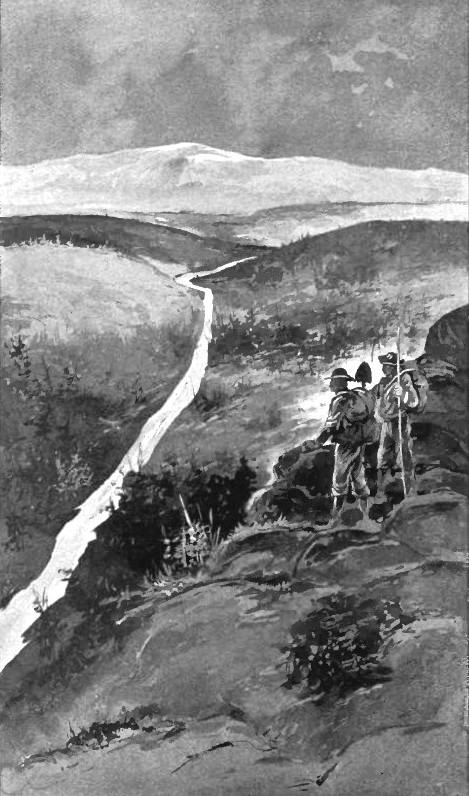The primary nickel deposits of Norilsk, Russia and Sudbury Ontario now yield the larger part of the world's production. Minor amounts of primary nickel ore are derived from deposits in South Africa, Norway and elsewhere. No important nickel deposits have been found in the United States, though a little has been mined in Oregon. The production from Sudbury has been derived from more than a dozen mines, which yielded about 1,500,000 tons of ore. Besides nickel, these ores normally contain an important percentage of copper ore, with a little gold, silver, palladium and native platinum. It is not necessary to specify the uses of nickel; they depend on its properties of toughening, whitening, hardening, increasing the elasticity and preventing the oxidation of certain alloys. Nickel steels are the most important of all alloy steels.
The geology of the Sudbury region is complicated. On a basement of Keewatin greenstone and the Sudbury quartzite (lower Huronian) rests a syncline of upper Huronian or Animikie rocks including conglomerate, tuff and slates. This syncline is 36 miles long and 16 miles wide. Between the basement and the Animikie there is intruded a thick sheet of igneous massive rocks which may be of Keweenawan age and is also referred to as the "nickel eruptive" on account of its unquestionable connection with the nickel deposits. This sheet is strongly differentiated, supposedly by gravitative settling of crystals in the magma. It grades from a norite or hypersthene gabbro in the lower parts to a micropegmatitic granite in the upper parts. Even in the lower section there is a certain amount of "acid extract" of micro-pegmatite between the other constituents. Granitic rocks are intruded in the basement and there are even some granite dikes in the norite at the Murray mine and possibly at the Creighton mine.
The ore-bodies occur partly as irregular masses along the floor of the norite, and partly as pipe-like or sheet-like masses at and near the basic edge of the norite. Some of the Sudbury ore-bodies are of very large size. One at Creighton covered an area of 30,000 sq. ft. and had a depth of over 400 ft. The pipe-like ore-bodies are characterized by a larger percentage of copper and precious metals than are the ordinary, masses found along the floor of the norite. The pipes extend to considerable depths, and one has been proved to a depth of over 2000 ft. The ore minerals are pyrrhotite, pentlandite and chalcopyrite with occasional magnetite, pyrite, sphalerite, sperrylite (PtAs2), polydymite (NuSs). The order of succession as established by Tolman and Rogers is silicates, magnetite, pyrrhotite, pentlandite and chalcopyrite. Pentlandite often forms veinlets in pyrrhotite and can easily be distinguished from the latter in polished section by etching with hydrochloric acid. The precious metals seem to follow the chalcopyrite and occur most abundantly in some of the "offset deposits" like Victoria and Vermilion. The ores of the Creighton mine are the richest, containing in per cent, about 4 nickel and 1.4 copper. Other deposits yield poorer ore with 2 nickel and 0.8 copper. The values of the precious metals in the ore are small but significant.
The best developed marginal deposit is at the Creighton mine where it has been followed to a depth of 2,000 feet on the incline. It lies between granite and norite but as in other marginal deposits the ore is a breccia or mass of subangular boulders of almost barren norite, cemented by the ore minerals, which often form a hard crust on the rock. The sulphides also enter norite and granite as veinlets. The massive ore contains abundant remnants of partly replaced rock minerals and in the poorer ores the sulphides have corroded and replaced the rock minerals. However, the interpretation of the facts observed under the microscope varies considerably. No gangue minerals are formed. The ore shoots are from a few feet to 150 feet thick. In the "offset deposits" the relations are similar although we here find various gangue minerals such as chlorite, epidote and quartz indicating somewhat different solutions and probably lower temperatures. It is supposed that the igneous magma became differentiated after injection, forming (1) a lower layer of norite containing nickeliferous pyrrhotite and the other basic minerals which crystallized out first and sank towards the floor of the laccolite, (2) an upper layer of micropegmatite. After intrusion the floor of the laccolite sank somewhat and formed a basin-shaped depression. That the nickel ores are genetically connected with the norite admits of no doubt. Nickel is found also in the silver-cobalt ores of the Cobalt district in Ontario. The nickel vein-minerals at this locality are chiefly niccolite and chloanthite, in a matrix of carbonates (calcite and dolomite). Millerite also occurs in the ore, and the weathered portions of the veins frequently contain annabergite.
South Africa. A nickel deposit in the Insizwa Range, South Africa, is similar to those of Sudbury. Pyrrhotite, chalcopyrite, and pentlandite, with a little bornite and niccolite, occur in a thick sheet of gabbro or norite, at its contact with underlying sediments. The deposits also contain a little platinum ore, osmiridium, gold, and silver. The sulphides separated from the magma at the end of the period of consolidation and corrode idiomorphic olivine, pyroxene, and feldspar South Africa also hosts the Phoenix mine near Francistown. This open pit mine works a sulfide deposit of copper and nickel ores. The Phoenix operations open pit mining began in 1995 and processes 5 million tonnes of ore per year with a traditional flotation technique. The Selkirk mine is an underground operation that began in 1989. In 2002, the underground mine shut down due to depletion of the nickel and copper ores. A feasibility study is now being prepared for surface mining of Selkirk’s disseminated ore reserves.
Russia's Norilsk mine produces large amounts of nickel from primary sulfide deposits. The Norilsk Nickel operation is the world’s largest producer of nickel and palladium and a leading producer of platinum and copper. It also produces a number of important by-products, including cobalt, chromium, rhodium, silver, gold, iridium, ruthenium, selenium, tellurium and sulfur. The deposit was formed in the Siberian Traps igneous province. When the traps erupted over one million cubic kilometers of lava, a large portion of it flowed through a series of flat-lying lava conduits lying below Norilsk and the Talnakh Mountains. The ore was formed when the erupting magma became saturated in sulfur, forming globules of melted sulfides consisting of pentlandite, chalcopyrite, and other minerals. These sulfides were concentrated by the continuing flows of magma, increasing their value in nickel, copper, platinum, and palladium. In the deposit at Mittel-Sohland, in Saxony, described by Beck, the sulphides form a rather rich nickel ore. They occur in an olivine diabase of gabbroic habit, containing, in order of deposition, magnetite, ilmenite, silicates, pyrrhotite, and chalcopyrite. The ores lie along the contact between the diabase and a granite and extend in a belt about 2 meters wide for a distance of 150 meters, gradually merging into normal diabase; the granite contains disseminated sulphides close to the contact. Beck believes that the ores were introduced after the consolidation of the rock.
Vogt has described the numerous Norwegian occurrences in great detail. The ore-bearing intrusives are norites or allied rocks, often with biotite and brown hornblende, and are intruded in pre-Cambrian gneiss. In part the gabbros are pressed to amphibolites. The nickeliferous pyrrhotites occur largely along the contacts. They contain little copper and only 1 to 1.5 per cent, nickel. In the amphibolitized deposits considerable migration has taken place. Garnet is formed along the streaks of pyrrhotite. The hornblende is in part transformed to bluish green amphibole.
A similar occurrence is that of Lancaster Gap, Pennsylvania, where the nickeliferous pyrrhotite lies along the contacts of a mass of amphibolite, contained in mica schist. Much nickel ore was mined here up to 1893. Many copper deposits in amphibolite are really dynamically metamorphosed forms of such magmatic deposits as have been described above. The examination of several such small deposits in Colorado led to this conclusion. Deposits at Sedalia and Turret, in Chaffee County, are basic dikes in a pre-Cambrian sedimentary series contact-metamorphosed by later granitic intrusion and still later altered to amphibolite. Chalcopyrite, sphalerite, and magnetite, are intergrown with bluish-green amphibole, garnet, spinel, and labradorite. The diabase is probably a differentiated offshoot from a neighboring large mass of coarse diabase.
Return
to Metal Ores Page:
Precious and Base Metal Ores


